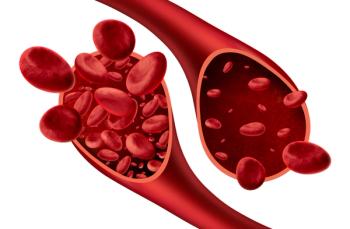
Arformoterol
This selective long-acting beta2-adrenergic receptor agonist causes relaxation of bronchial smooth muscle and has 2-fold greater potency than racemic formoterol. Arformoterol was approved on October 6, 2006, for the long-term, twice-daily (morning and evening) maintenance treatment of bronchoconstriction in patients with chronic obstructive pulmonary disease (COPD), including chronic bronchitis and emphysema.
Brovana
ArformoterolSepracorLong-acting beta2 agonist approved for maintenance treatment of COPD
This selective long-acting beta2-adrenergic receptor agonist causes relaxation of bronchial smooth muscle and has 2-fold greater potency than racemic formoterol. Arformoterol was approved on October 6, 2006, for the long-term, twice-daily (morning and evening) maintenance treatment of bronchoconstriction in patients with chronic obstructive pulmonary disease (COPD), including chronic bronchitis and emphysema.
Safety. Long-acting beta2-adrenergic agonists may increase the risk of asthma-related death, as demonstrated in previous studies involving the agent salmeterol. Arformoterol is not indicated for the treatment of acute episodes of bronchospasm (ie, rescue therapy). Arformoterol therapy should not be initiated in patients with acutely deteriorating COPD, which may be a life-threatening condition. If signs of disease deterioration begin after initiation of arformoterol therapy, re-evaluation of the treatment regimen should be undertaken at once, but the dose of arformoterol should not be increased.Arformoterol should not be used in conjunction with other inhaled, long-acting beta2 agonists or with any medications containing long-acting beta2 agonists. As with other inhaled beta2 agonists, arformoterol can produce paradoxical bronchospasm that may be life threatening. Therapy should be discontinued immediately if paradoxical broncho-spasm occurs with arformoterol. As with other beta2 agonists, therapy with arformoterol can produce a clinically significant cardiovascular effect in some patients as measured by increases in pulse rate, blood pressure, and/or other symptoms. Taking this into consideration, arformoterol should be administered with caution in patients with cardiovascular disorders, especially coronary insufficiency, cardiac arrhythmias, and hypertension. As with other beta2 agonists, arformoterol should be admini-stered with extreme caution in patients being treated with monoamine oxidase inhibitors, tricyclic antidepressants, or drugs known to prolong the QTc interval because the action of adrenergic agonists on the cardiovascular system maybe potentiated by these agents. Immediate hypersensitivity reactions may occur after administration of arformoterol as demonstrated by cases of anaphylaxis, urticaria, angioedema, rash, and bronchospasm. The most common adverse events associated with arformoterol treatment include back pain, diarrhea, leg cramps, dyspnea, rash, flu syndrome, and lung disorder.
Dosing. The recommended dose of arformoterol for COPD is 15 mcg administered twice a day (morning and evening) by nebulization. A total daily dose >30 mcg (15 mcg twice daily) is not recommended. The drug should be administered by the inhaled route via a standard jet nebulizer connected to an air compressor. Arformoterol should be stored refrigerated in the individual unit dose vials sealed in single foil pouches.
Newsletter
Get the latest industry news, event updates, and more from Managed healthcare Executive.






















































